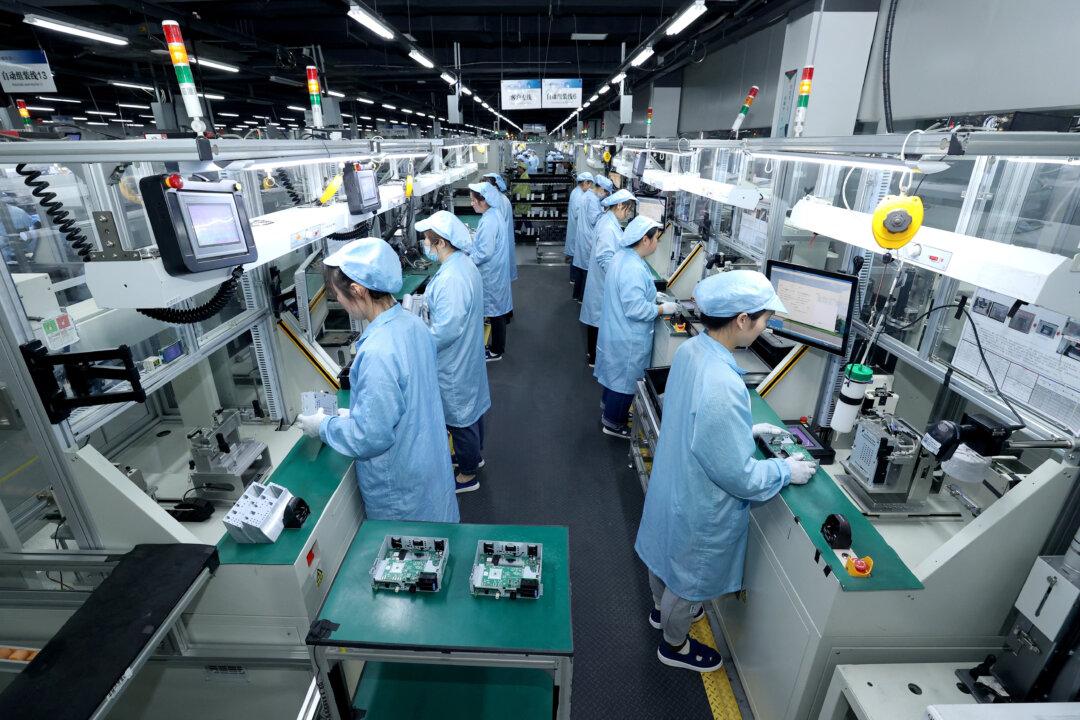China’s factory activity shrank more than expected in April following two months of recovery, a survey showed on Wednesday, suggesting the country’s sprawling manufacturing industry is beginning to feel the impacts of the ongoing trade war with the United States.
The official NBS data showed that new export orders declined to 44.7, down from 49 in March; its lowest level—excluding the COVID-19 disruptions—since April 2012.
The non-manufacturing PMI, which includes services and construction, also dropped from 50.8 to 50.4 in April but still hovered above the 50-mark that separates economic growth from contraction.
The ruling Chinese Communist Party (CCP) has also pledged more fiscal stimulus, increased debt issuance, and promised further monetary easing in an effort to grant the world’s second-largest economy some reprieve.
Still, the latest data appears to show Trump’s 145 percent tariffs on most China-origin goods—part of an ongoing effort from the U.S. administration to balance trade deficits and put pressure on the Chinese regime to curb China’s export of fentanyl into the United States—are beginning to bite.
Trump’s tariffs come as China continues to battle with deflation due to sluggish income growth and a prolonged property crisis after the collapse of Evergrande.
Beijing has retaliated with 125 percent levies on U.S. imports, effectively imposing a trade embargo on each other’s goods. It has also placed export restrictions on rare-earth minerals that are critical for manufacturing high-tech items like weapons, semiconductors, and batteries.
According to that survey, which beat analysts’ expectations in the Reuters poll, China’s manufacturing PMI fell to 50.4 in April from 51.2 in March. While it still remained above the 50-mark separating growth from contraction, it marked the lowest reading since January.
“Trade disruptions resulting from higher U.S. tariffs reportedly contributed to the first fall in new export orders for three months,” Caixin/S&P Global said in a statement. “Weaker external demand dampened growth of overall new orders, which increased at the softest pace in seven months.”
Dr. Wang Zhe, senior economist at Caixin Insight Group, added that the ripple effect of the ongoing China-U.S. tariff standoff will gradually be felt in the second and third quarters.
China’s yuan inched lower against the dollar following the data’s release on Wednesday.
The International Monetary Fund, Goldman Sachs, and UBS have also recently revised down their economic growth forecasts for China over 2025 and into 2026, pointing to the impact of U.S. tariffs, with none of them expecting it to achieve its 5 percent economic growth target.
“You don’t grow at 5.4 percent and have your bond market yields collapse into economic nuclear winter,” he said in a post on the social media platform X.







